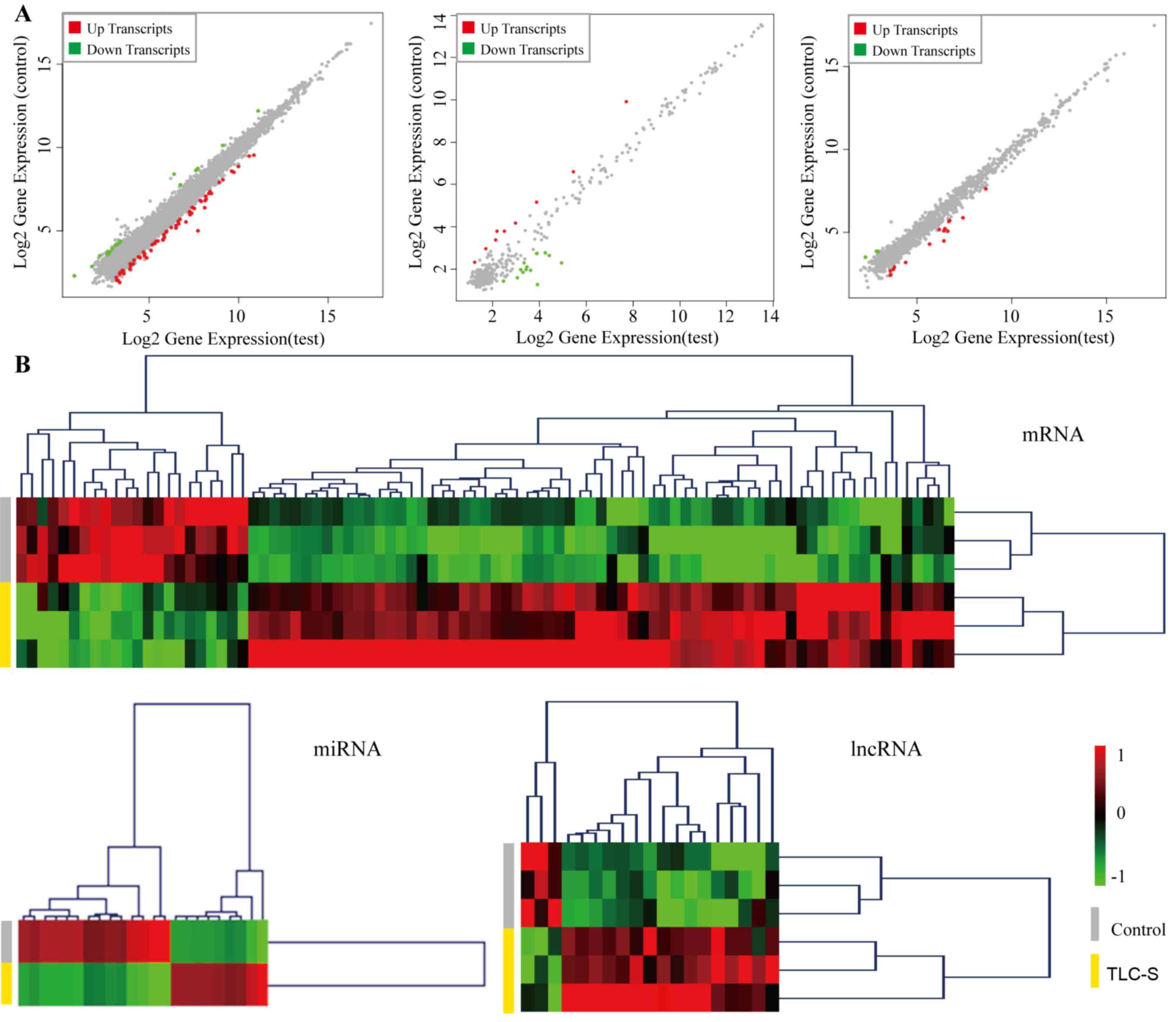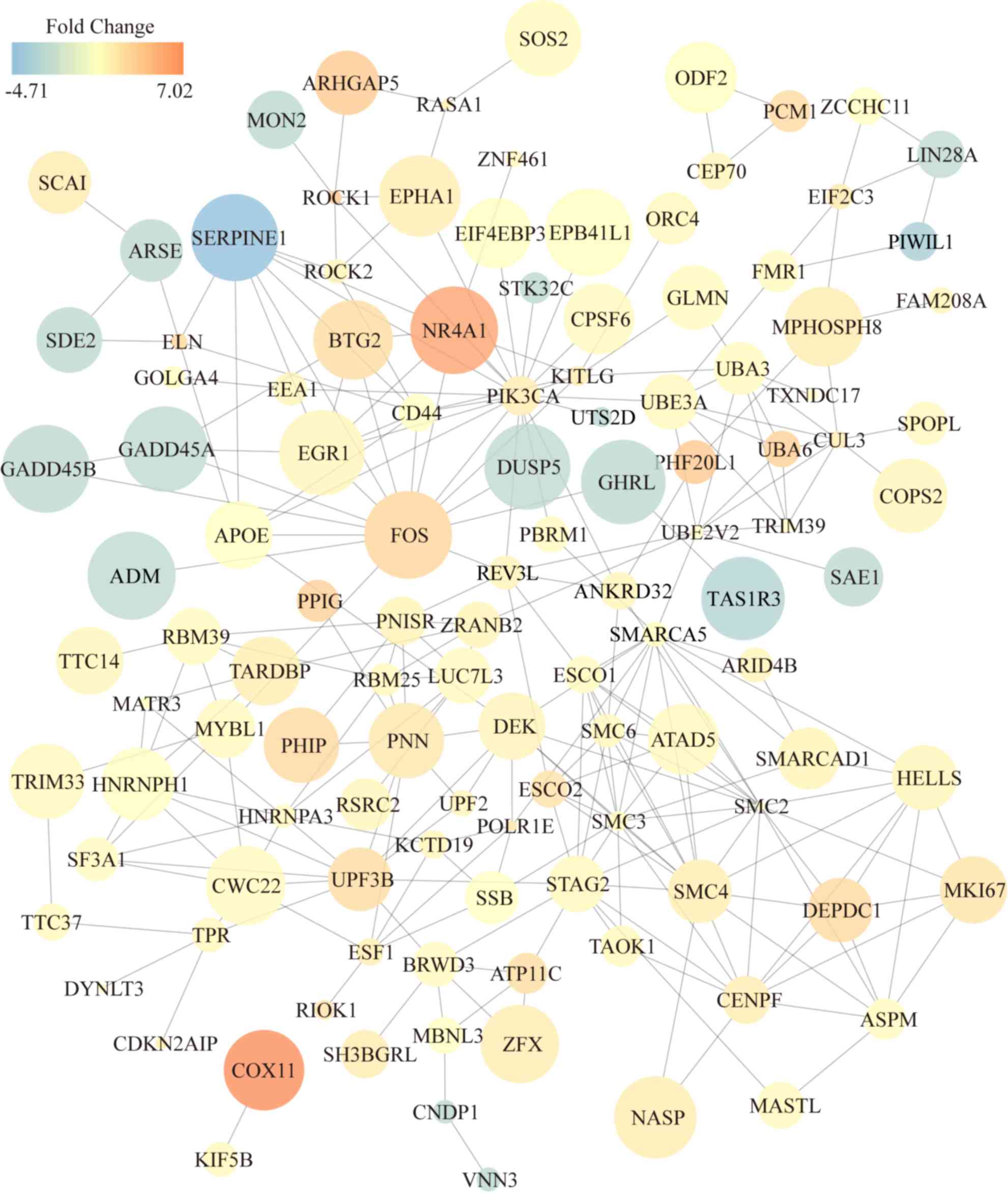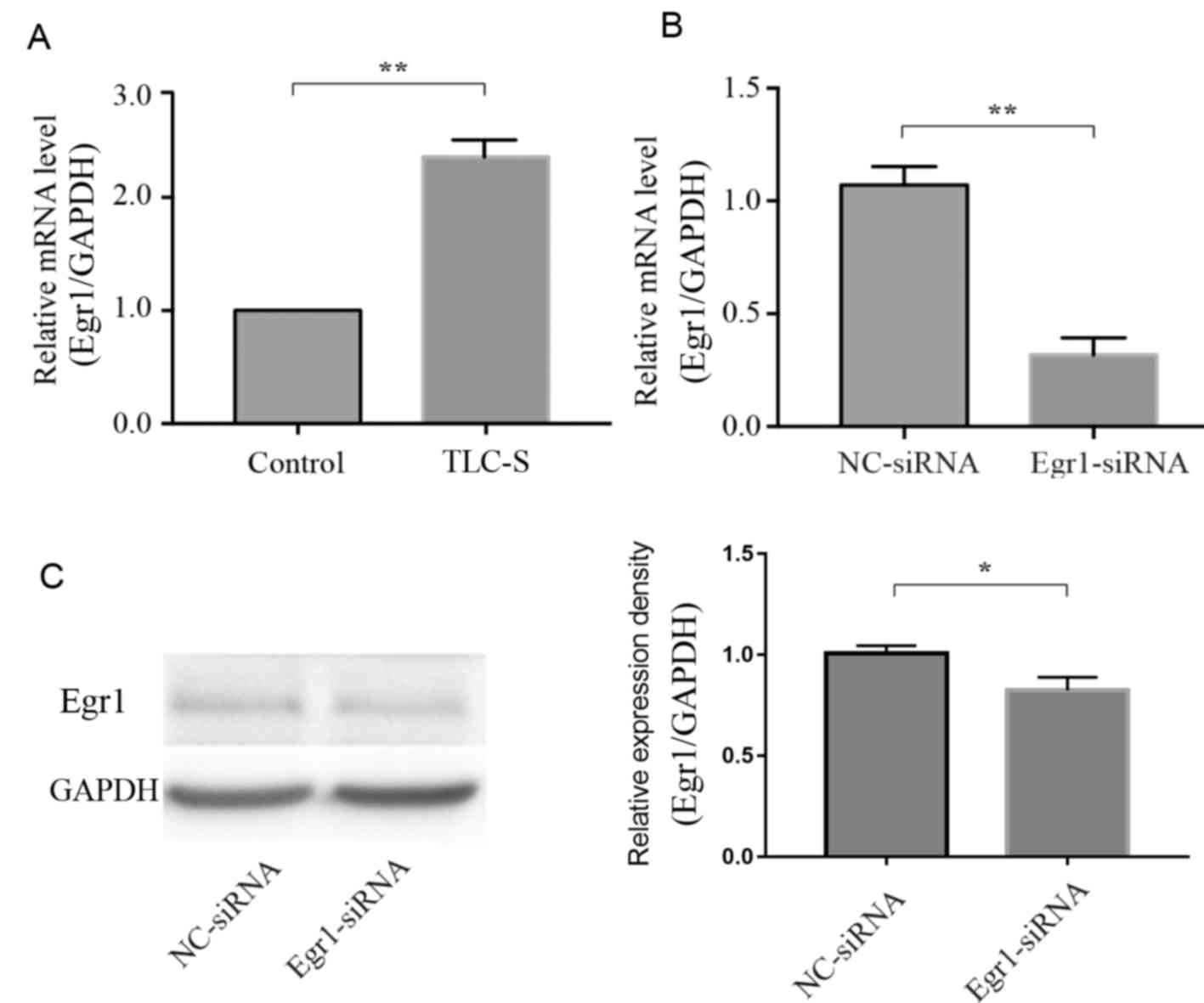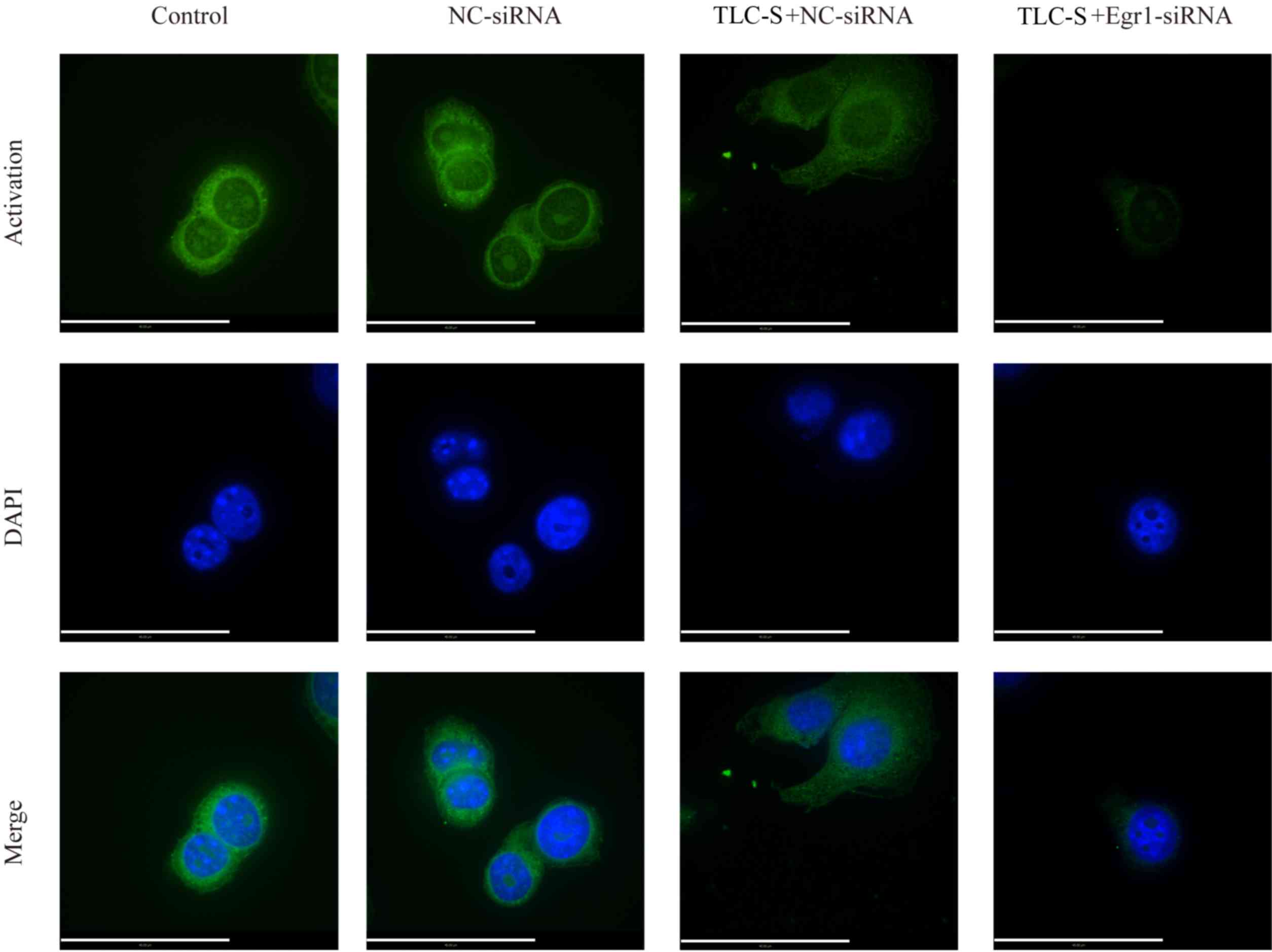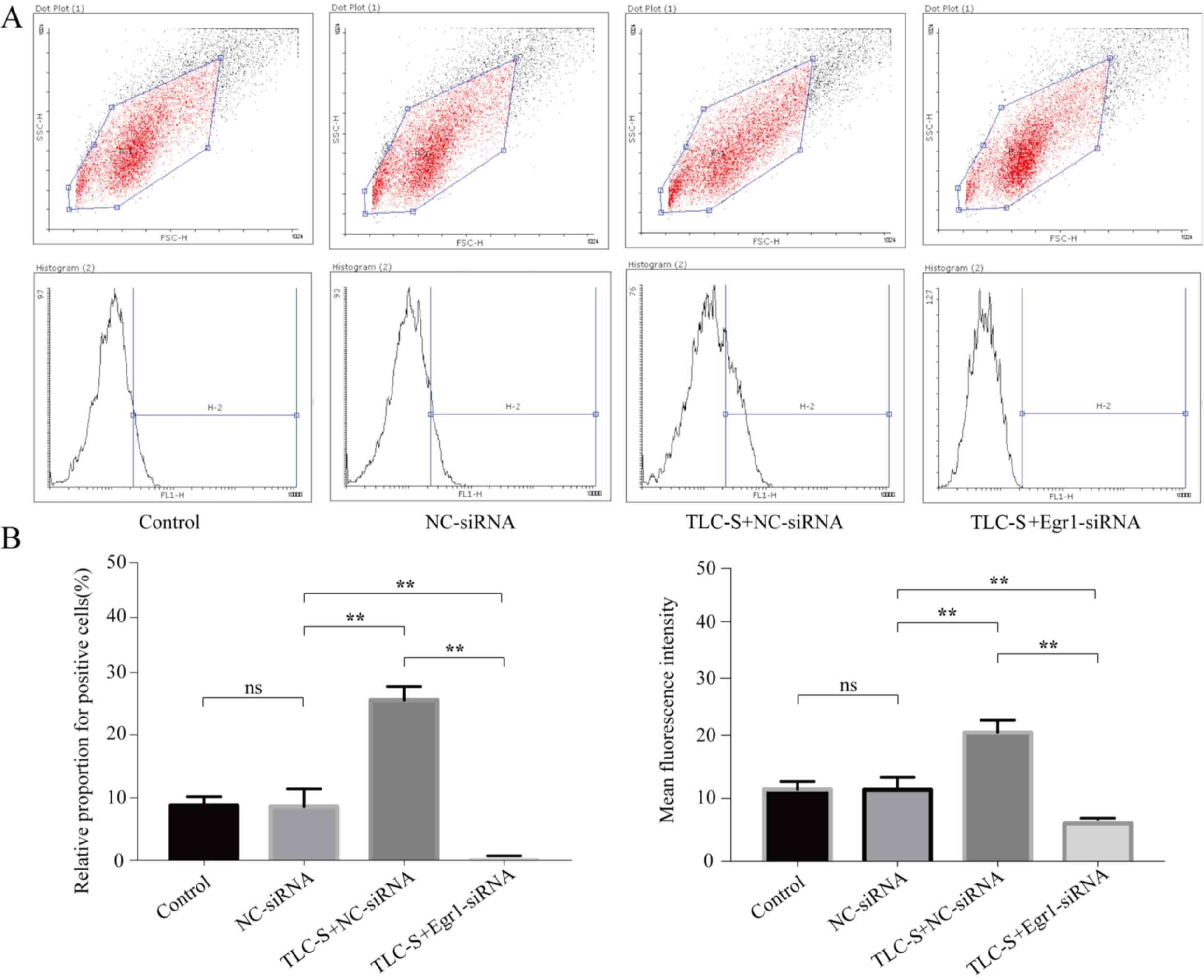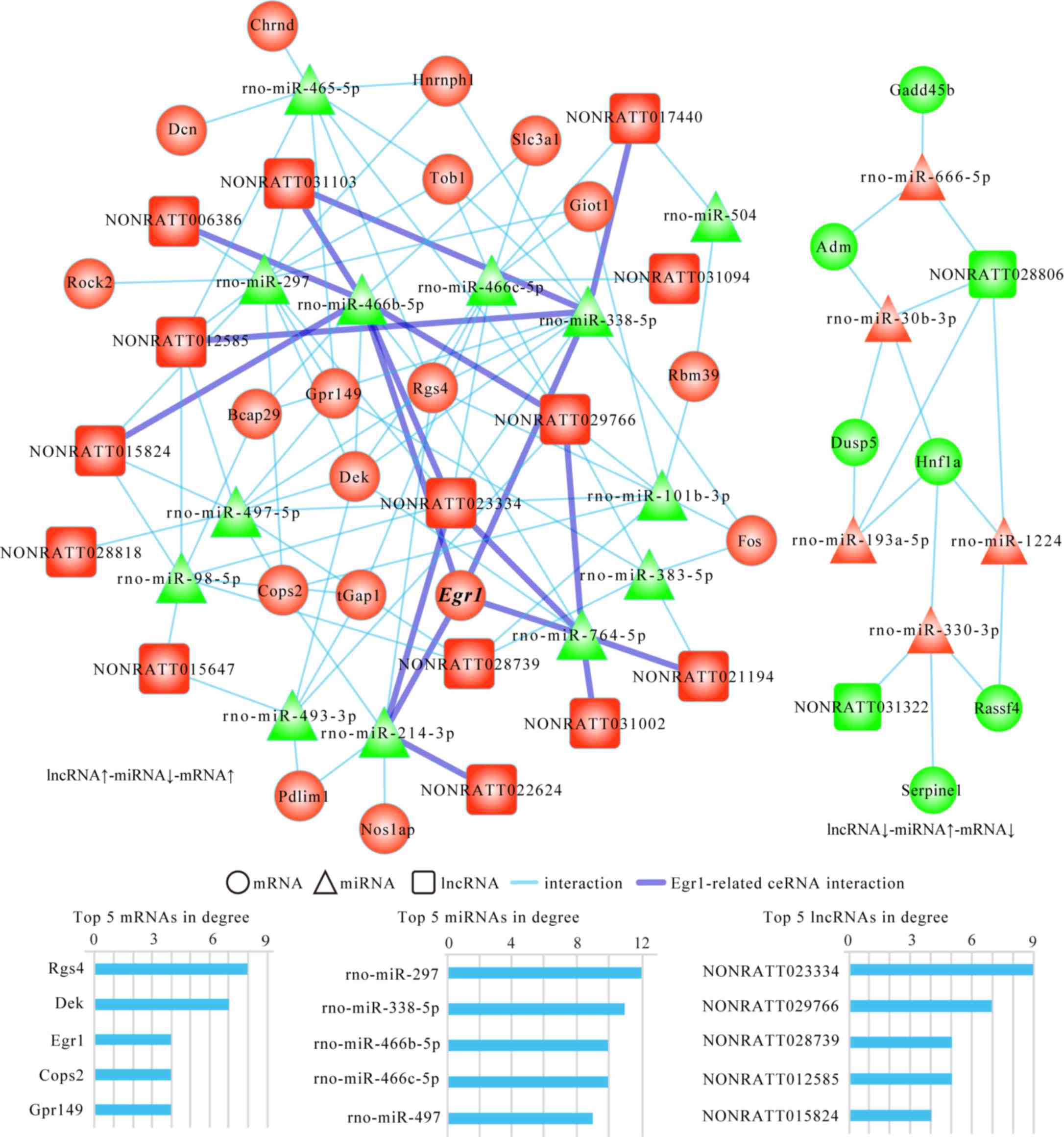|
1
|
Krishna SG, Kruger AJ, Patel N, Hinton A,
Yadav D and Conwell DL: Cholecystectomy during index admission for
acute biliary pancreatitis lowers 30-day readmission rates.
Pancreas. 47:996–1002. 2018. View Article : Google Scholar : PubMed/NCBI
|
|
2
|
Chaitoff A, Cifu AS and Niforatos JD:
Initial management of acute pancreatitis. JAMA. May 7–2020.(Epub
ahead of print). View Article : Google Scholar : PubMed/NCBI
|
|
3
|
Lankisch PG, Apte M and Banks PA: Acute
pancreatitis. Lancet. 386:85–96. 2015. View Article : Google Scholar : PubMed/NCBI
|
|
4
|
Pancreas Study Group, Chinese Society of
Gastroenterology, Chinese Medical Association, Editorial Board of
Chinese Journal of Pancreatology & Editorial Board of Chinese
Journal of Digestion, . Chinese guidelines for the management of
acute pancreatitis (Shanghai, 2013). J Clin Hepatol. 29:656–660.
2013.
|
|
5
|
Hofbauer B, Saluja AK, Lerch MM, Bhagat L,
Bhatia M, Lee HS, Frossard JL, Adler G and Steer ML: Intra-acinar
cell activation of trypsinogen during caerulein-induced
pancreatitis in rats. Am J Physiol. 275:G352–G362. 1998.PubMed/NCBI
|
|
6
|
Dawra R, Sah RP, Dudeja V, Rishi L,
Talukdar R, Garg P and Saluja AK: Intra-acinar trypsinogen
activation mediates early stages of pancreatic injury but not
inflammation in mice with acute pancreatitis. Gastroenterology.
141:2210–2217.e2. 2011. View Article : Google Scholar : PubMed/NCBI
|
|
7
|
Lerch MM and Gorelick FS: Early
trypsinogen activation in acute pancreatitis. Med Clin North Am.
84549–563. (viii)2000. View Article : Google Scholar : PubMed/NCBI
|
|
8
|
Hu F, Xue M, Li Y, Jia YJ, Zheng ZJ, Yang
YL, Guan MP, Sun L and Xue YM: Early growth response 1 (Egr1) is a
transcriptional activator of NOX4 in oxidative stress of diabetic
kidney disease. J Diabetes Res. 2018:34056952018. View Article : Google Scholar : PubMed/NCBI
|
|
9
|
Kaufmann A, Rössler OG and Thiel G:
Expression of the transcription factor Egr-1 in pancreatic acinar
cells following stimulation of cholecystokinin or Gαq-coupled
designer receptors. Cell Physiol Biochem. 33:1411–1425. 2014.
View Article : Google Scholar : PubMed/NCBI
|
|
10
|
Shajahan-Haq AN, Boca SM, Jin L,
Bhuvaneshwar K, Gusev Y, Cheema AK, Demas DD, Raghavan KS, Michalek
R, Madhavan S and Clarke R: EGR1 regulates cellular metabolism and
survival in endocrine resistant breast cancer. Oncotarget.
8:96865–96884. 2017. View Article : Google Scholar : PubMed/NCBI
|
|
11
|
Ji B, Chen XQ, Misek DE, Kuick R, Hanash
S, Ernst S, Najarian R and Logsdon CD: Pancreatic gene expression
during the initiation of acute pancreatitis: Identification of
EGR-1 as a key regulator. Physiol Genomics. 14:59–72. 2003.
View Article : Google Scholar : PubMed/NCBI
|
|
12
|
Gong LB, He L, Liu Y, Chen XQ and Jiang B:
Expression of early growth response factor-1 in rats with
cerulein-induced acute pancreatitis and its significance. World J
Gastroenterol. 11:5022–5024. 2005. View Article : Google Scholar : PubMed/NCBI
|
|
13
|
Wang W, Han Y, Jo HA, Lee J and Song YS:
Non-coding RNAs shuttled via exosomes reshape the hypoxic tumor
microenvironment. J Hematol Oncol. 13:672020. View Article : Google Scholar : PubMed/NCBI
|
|
14
|
Ren N, Jiang T, Wang C, Xie S, Xing Y,
Piao D, Zhang T and Zhu Y: lncRNA ADAMTS9-AS2 inhibits gastric
cancer (GC) development and sensitizes chemoresistant GC cells to
cisplatin by regulating miR-223-3p/NLRP3 axis. Aging (Albany NY).
12:110252020. View Article : Google Scholar : PubMed/NCBI
|
|
15
|
Renganathan A and Felley-Bosco E: Long
noncoding RNAs in cancer and therapeutic potential. Adv Exp Med
Biol. 1008:199–222. 2017. View Article : Google Scholar : PubMed/NCBI
|
|
16
|
Li B, Mao R, Liu C, Zhang W, Tang Y and
Guo Z: lncRNA FAL1 promotes cell proliferation and migration by
acting as a CeRNA of miR-1236 in hepatocellular carcinoma cells.
Life Sci. 197:122–129. 2018. View Article : Google Scholar : PubMed/NCBI
|
|
17
|
Salmena L, Poliseno L, Tay Y, Kats L and
Pandolfi PP: A ceRNA hypothesis: The rosetta stone of a hidden RNA
language? Cell. 146:353–358. 2011. View Article : Google Scholar : PubMed/NCBI
|
|
18
|
Zhao D, Ge H, Ma B, Xue D, Zhang W, Li Z
and Sun H: The interaction between ANXA2 and lncRNA Fendrr promotes
cell apoptosis in caerulein-induced acute pancreatitis. J Cell
Biochem. Nov 26–2018.(Epub ahead of print).
|
|
19
|
Wang L, Zhao X and Wang Y: The pivotal
role and mechanism of long non-coding RNA B3GALT5-AS1 in the
diagnosis of acute pancreatitis. Artif Cells Nanomed Biotechnol.
47:2307–2315. 2019. View Article : Google Scholar : PubMed/NCBI
|
|
20
|
Li Z, Lu M, Chu J, Qiao X, Meng X, Sun B,
Zhang W and Xue D: Early proteome analysis of rat pancreatic acinar
AR42J cells treated with taurolithocholic acid 3-sulfate.
Pancreatology. 12:248–256. 2012. View Article : Google Scholar : PubMed/NCBI
|
|
21
|
Yang Z, Yang W, Lu M, Li Z, Qiao X, Sun B,
Zhang W and Xue D: Role of the c-Jun N-terminal kinase signaling
pathway in the activation of trypsinogen in rat pancreatic acinar
cells. Int J Mol Med. 41:1119–1126. 2018. View Article : Google Scholar : PubMed/NCBI
|
|
22
|
Song Z, Huang Y, Liu C, Lu M, Li Z, Sun B,
Zhang W and Xue D: miR-352 participates in the regulation of
trypsinogen activation in pancreatic acinar cells by influencing
the function of autophagic lysosomes. Oncotarget. 9:10868–10879.
2018. View Article : Google Scholar : PubMed/NCBI
|
|
23
|
Fan T, Qu R, Yu Q, Sun B, Jiang X, Yang Y,
Huang X, Zhou Z, Ouyang J, Zhong S and Dai J: Bioinformatics
analysis of the biological changes involved in the osteogenic
differentiation of human mesenchymal stem cells. J Cell Mol Med.
May 28–2020.(Epub ahead of print). View Article : Google Scholar
|
|
24
|
Zhang J, Cong R, Zhang Q, Zeng T, Song R
and Meng X: Integrative analysis of ceRNA network and DNA
methylation associated with gene expression in malignant
pheochromocytomas: A study based on the cancer genome atlas. Transl
Androl Urol. 9:344–354. 2020. View Article : Google Scholar : PubMed/NCBI
|
|
25
|
Mente S and Kuhn M: The use of the R
language for medicinal chemistry applications. Curr Top Med Chem.
12:1957–1964. 2012. View Article : Google Scholar : PubMed/NCBI
|
|
26
|
Xie C, Yuan J, Li H, Li M, Zhao G, Bu D,
Zhu W, Wu W, Chen R and Zhao Y: NONCODEv4: Exploring the world of
long non-coding RNA genes. Nucleic Acids Res 42 (Database Issue).
D98–D103. 2014. View Article : Google Scholar
|
|
27
|
Szklarczyk D, Morris JH, Cook H, Kuhn M,
Wyder S, Simonovic M, Santos A, Doncheva NT, Roth A, Bork P, et al:
The STRING database in 2017: Quality-controlled protein-protein
association networks, made broadly accessible. Nucleic Acids Res.
45(D1): D362–D368. 2017. View Article : Google Scholar : PubMed/NCBI
|
|
28
|
Kanehisa M and Goto S: KEGG: Kyoto
encyclopaedia of genes and genomes. Nucleic Acids Res. 28:27–30.
2000. View Article : Google Scholar : PubMed/NCBI
|
|
29
|
Ashburner M, Ball CA, Blake JA, Botstein
D, Butler H, Cherry JM, Davis AP, Dolinski K, Dwight SS, Eppig JT,
et al: Gene ontology: Tool for the unification of biology. The gene
ontology consortium. Nat Genet. 25:25–29. 2000. View Article : Google Scholar : PubMed/NCBI
|
|
30
|
Livak KJ and Schmittgen TD: Analysis of
relative gene expression data using real-time quantitative PCR and
the 2(-Delta Delta C(T)) method. Methods. 25:402–408. 2001.
View Article : Google Scholar : PubMed/NCBI
|
|
31
|
Das S, Ghosal S, Sen R and Chakrabarti J:
lnCeDB: Database of human long noncoding RNA acting as competing
endogenous RNA. PLoS One. 9:e989652014. View Article : Google Scholar : PubMed/NCBI
|
|
32
|
Yao W, Zhu D, Lu H, Liu C, Sun B, Zhang W
and Xue D: The regulatory effect of the kinase inhibitor PD98059 on
autophagic flux during trypsinogen activation in pancreatic acinar
cells. Pancreas. 49:290–299. 2020. View Article : Google Scholar : PubMed/NCBI
|
|
33
|
Gukovskaya AS, Gorelick FS, Groblewski GE,
Mareninova OA, Lugea A, Antonucci L, Waldron RT, Habtezion A, Karin
M, Pandol SJ and Gukovsky I: Recent insights into the pathogenic
mechanism of pancreatitis: Role of acinar cell organelle disorders.
Pancreas. 48:459–470. 2019. View Article : Google Scholar : PubMed/NCBI
|
|
34
|
Bhatia M, Wong FL, Cao Y, Lau HY, Huang J,
Puneet P and Chevali L: Pathophysiology of acute pancreatitis.
Pancreatology. 5:132–144. 2005. View Article : Google Scholar : PubMed/NCBI
|
|
35
|
Gao B, Zhang X, Huang Y, Yang Z, Zhang Y,
Zhang W, Gao ZH and Xue D: Coding and non-coding gene regulatory
networks underlie the immune response in liver cirrhosis. PLoS One.
12:e01741422017. View Article : Google Scholar : PubMed/NCBI
|
|
36
|
Gao B, Shao Q, Choudhry H, Marcus V, Dong
K, Ragoussis J and Gao ZH: Weighted gene co-expression network
analysis of colorectal cancer liver metastasis genome sequencing
data and screening of anti-metastasis drugs. Int J Oncol.
49:1108–1118. 2016. View Article : Google Scholar : PubMed/NCBI
|
|
37
|
de Dios I, Uruñuela A, Pinto RM, Orfao A
and Manso MA: Cell-cycle distribution of pancreatic cells from rats
with acute pancreatitis induced by bile-pancreatic obstruction.
Cell Tissue Res. 300:307–314. 2000. View Article : Google Scholar : PubMed/NCBI
|
|
38
|
Zhang B, Li SL, Xie HL, Fan JW, Gu CW,
Kang C and Teng MJ: Effects of silencing the DUSP1 gene using
lentiviral vector-mediated siRNA on the release of proinflammatory
cytokines through regulation of the MAPK signaling pathway in mice
with acute pancreatitis. Int J Mol Med. 41:2213–2224.
2018.PubMed/NCBI
|
|
39
|
Cao MH, Xu J, Cai HD, Lv ZW, Feng YJ, Li
K, Chen CQ and Li YY: p38 MAPK inhibition alleviates experimental
acute pancreatitis in mice. Hepatobiliary Pancreat Dis Int.
14:101–106. 2015. View Article : Google Scholar : PubMed/NCBI
|
|
40
|
Ma R, Yuan F, Wang S, Liu Y, Fan T and
Wang F: Calycosin alleviates cerulein-induced acute pancreatitis by
inhibiting the inflammatory response and oxidative stress via the
p38 MAPK and NF-κB signal pathways in mice. Biomed Pharmacother.
105:599–605. 2018. View Article : Google Scholar : PubMed/NCBI
|
|
41
|
Sandoval J, Pereda J, Pérez S, Finamor I,
Vallet-Sánchez A, Rodríguez JL, Franco L, Sastre J and López-Rodas
G: Epigenetic regulation of early- and late-response genes in acute
pancreatitis. J Immunol. 197:4137–4150. 2016. View Article : Google Scholar : PubMed/NCBI
|
|
42
|
Woo SM, Min KJ, Kim S, Park JW, Kim DE,
Chun KS, Kim YH, Lee TJ, Kim SH, Choi YH, et al: Silibinin induces
apoptosis of HT29 colon carcinoma cells through early growth
response-1 (EGR-1)-mediated non-steroidal anti-inflammatory
drug-activated gene-1 (NAG-1) up-regulation. Chem Biol Interact.
211:36–43. 2014. View Article : Google Scholar : PubMed/NCBI
|
|
43
|
Yan L, Wang Y, Liang J, Liu Z, Sun X and
Cai K: miR-301b promotes the proliferation, mobility, and
epithelial-to-mesenchymal transition of bladder cancer cells by
targeting EGR1. Biochem Cell Biol. 95:571–577. 2017. View Article : Google Scholar : PubMed/NCBI
|
|
44
|
Leu SY, Kuo LH, Weng WT, Lien IC, Yang CC,
Hsieh TT, Cheng YN, Chien PH, Ho LC, Chen SH, et al: Loss of EGR-1
uncouples compensatory responses of pancreatic β cells.
Theranostics. 10:4233–4249. 2020. View Article : Google Scholar : PubMed/NCBI
|
|
45
|
Billah M, Ridiandries A, Rayner BS,
Allahwala UK, Dona A, Khachigian LM and Bhindi R: Egr-1 functions
as a master switch regulator of remote ischemic
preconditioning-induced cardioprotection. Basic Res Cardiol.
115:32019. View Article : Google Scholar : PubMed/NCBI
|
|
46
|
Fichtner-Feigl S, Strober W, Kawakami K,
Puri RK and Kitani A: IL-13 signaling through the IL-13alpha2
receptor is involved in induction of TGF-beta1 production and
fibrosis. Nat Med. 12:99–106. 2016. View
Article : Google Scholar
|
|
47
|
Hogan KA, Ravindran A, Podolsky MA and
Glick AB: The TGFβ1 pathway is required for NFκB dependent gene
expression in mouse keratinocytes. Cytokine. 64:652–659. 2013.
View Article : Google Scholar : PubMed/NCBI
|
|
48
|
Ho LC, Sung JM, Shen YT, Jheng HF, Chen
SH, Tsai PJ and Tsai YS: Egr-1 deficiency protects from renal
inflammation and fibrosis. J Mol Med (Berl). 94:933–942. 2016.
View Article : Google Scholar : PubMed/NCBI
|
|
49
|
Solovey A, Somani A, Belcher JD, Milbauer
L, Vincent L, Pawlinski R, Nath KA, Kelm RJ Jr, Mackman N,
O'Sullivan MG, et al: A monocyte-TNF-endothelial activation axis in
sickle transgenic mice: Therapeutic benefit from TNF blockade. Am J
Hematol. 92:1119–1130. 2017. View Article : Google Scholar : PubMed/NCBI
|
|
50
|
Bi JG, Zheng JF, Li Q, Bao SY, Yu XF, Xu P
and Liao CX: MicroRNA-181a-5p suppresses cell proliferation by
targeting Egr1 and inhibiting Egr1/TGF-β/Smad pathway in
hepatocellular carcinoma. Int J Biochem Cell Biol. 106:107–116.
2019. View Article : Google Scholar : PubMed/NCBI
|
|
51
|
Li DM, Zhong M, Su QB, Song FM, Xie TG, He
JH, Wei J, Lu GS, Hu XX and Wei GN: Active fraction of polyrhachis
vicina rogers (AFPR) suppressed breast cancer growth and
progression via regulating EGR1/lncRNA-NKILA/NF-κB axis. Biomed
Pharmacother. 123:1096162020. View Article : Google Scholar : PubMed/NCBI
|
|
52
|
Pang Z, Raudonis R, McCormick C and Cheng
Z: Early growth response 1 deficiency protects the host against
pseudomonas aeruginosa lung infection. Infect Immun. 88:e00678–19.
2019. View Article : Google Scholar : PubMed/NCBI
|
|
53
|
Xiao C, Nemazee D and Gonzalez-Martin A:
MicroRNA control of B cell tolerance, autoimmunity and cancer.
Semin Cancer Biol. 64:102–107. 2020. View Article : Google Scholar : PubMed/NCBI
|
|
54
|
Liu J, Cao L, Feng Y, Li Y and Li T:
miR-338-3p inhibits TNF-α-induced lipogenesis in human sebocytes.
Biotechnol Lett. 39:1343–1349. 2017. View Article : Google Scholar : PubMed/NCBI
|
|
55
|
Zhao L, Liu YW, Yang T, Gan L, Yang N, Dai
SS and He F: The mutual regulation between miR-214 and A2AR
signaling plays an important role in inflammatory response. Cell
Signal. 27:2026–2034. 2015. View Article : Google Scholar : PubMed/NCBI
|
|
56
|
Tay Y, Rinn J and Pandolfi PP: The
multilayered complexity of ceRNA crosstalk and competition. Nature.
505:344–352. 2014. View Article : Google Scholar : PubMed/NCBI
|
|
57
|
Thomson DW and Dinger ME: Endogenous
microRNA sponges: Evidence and controversy. Nat Rev Genet.
17:272–283. 2016. View Article : Google Scholar : PubMed/NCBI
|















